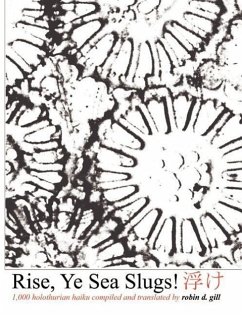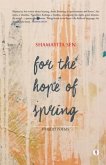Rise, Ye Sea Slugs! is a book of many faces. First, it is a book of translated haiku and contains over 900 of these short Japanese poems in the original (smoothly inserted in the main body),with phonetic and literal renditions, as well as the authors English translations and explanations. All but a dozen or two of the haiku are translated for the first time. There is an index of poets, poems and a bibliography. Second, it is a book of sea slug haiku, for all of the poems are about holothurians, which scientists prefer to call sea cucumbers. (The word cucumber is long for haiku and metaphorically unsuitable for many poems, so poetic license was taken.) With this book, the namako, as the sea cucumber is called in Japanese, becomes the most translated single subject in haiku, surpassing the harvest moon, the snow, the cuckoo, butterflies and even cherry blossoms. Third, it is a book of original haiku. While the authors original intent was to include only genuine old haiku (dating back to the 17th century), modern haiku were added and, eventually, Keigu (Gills haiku name) composed about a hundred of his own to help fill out gaps in the metaphorical museum. For many if not most modern haiku taken from the web, it is also their first time in print! Fourth, it is a book of metaphor. How may we arrange hundreds of poems on a single theme? Gill divides them into 21 main metaphors, including the Cold Sea Slug, the Mystic Sea Slug, the Helpless Sea Slug, the Slippery Sea Slug, the Silent Sea Slug, and the Melancholy Sea Slug, giving each a chapter, within which the metaphors may be further subdivided, and adds a 100 pages of Sundry Sea Slugs (scores of varieties including Monster, Spam, Flying, Urban Myth, and Exploding). Fifth, it is a book on haiku. E ditors usually select only the best haiku, but, Gill includes good and bad haiku by everyone from the 17th century haiku master to the anonymous haiku rejected in some internet contest. This is not to say all poe
Bitte wählen Sie Ihr Anliegen aus.
Rechnungen
Retourenschein anfordern
Bestellstatus
Storno




